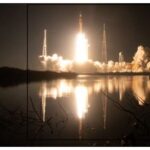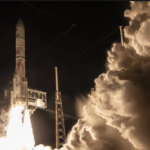Browse Resources by Year
Space leaders in 2023 pondered a lack of launch vehicles to lift anticipated swarms of satellites to orbit. But 2024 could bring relief.
Read MoreSatellite constellations with units in the hundreds to thousands are causing visual and radio interference to astronomical observations across the world. These incidents coincide with astronomers’ calls for updated space policy and technology to preserve their data.
Read MoreIn what was the busiest year of the Space Age, 2023 set records with 223 launch attempts and 212 successful launches. A sharp uptick in commercial space launches drove much of the increase, with the highest number of launches coming from the United States.
Read MoreThe S-Network Space Index℠ tracks a global portfolio of publicly traded companies that are active in space-related businesses such as satellite-based telecommunications; transmission of television and radio content via satellite; launch vehicle and satellite manufacturing, deployment, operation, and maintenance; manufacturing of ground equipment that relies on satellite systems; development of space technology and hardware; and space-based imagery and intelligence services.
Read MoreTime, the measurement that science still has difficulty explaining, has allowed everything from transatlantic exploration to space travel and now is the fabric that holds together financial institutions, supply chains and the internet. But if you counted down the closing seconds of 2023 with New Year’s revelers, you were almost certainly wrong.
Read MoreAs the space economy continues to grow, Japan is capitalizing on new opportunities in the public and private sectors. Government budget increases, private industry investment, and international cooperation are contributing to the nation’s plans to double its space market in the coming decade.
Read More








